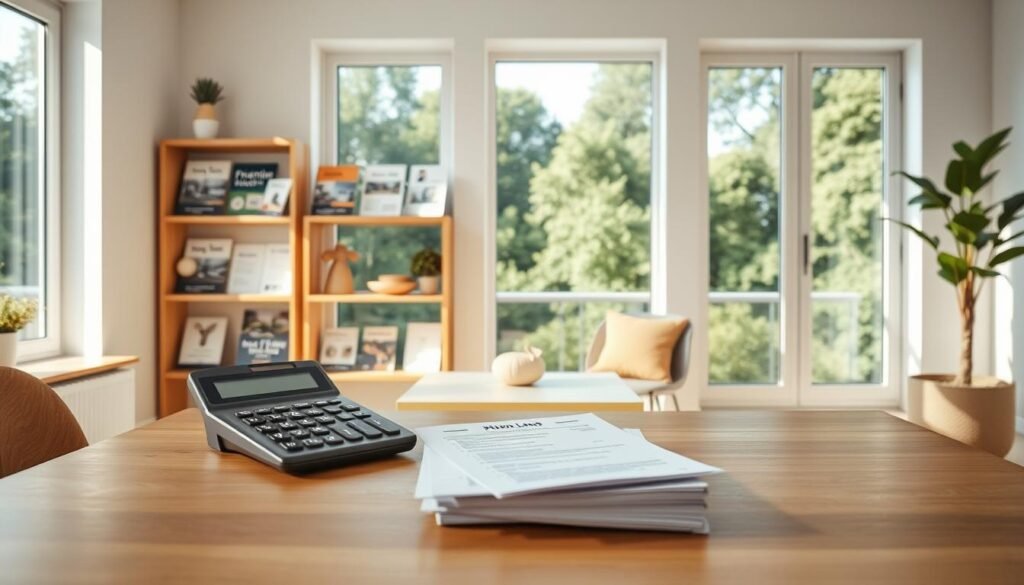Updating your property doesn’t require emptying your wallet. With creativity and smart strategies, you can refresh your environment while keeping costs low. Many property owners feel stuck between wanting improvements and managing limited funds, but affordable solutions exist for every room and repair.
Focus on functionality first. Address structural issues like leaky roofs or faulty wiring before cosmetic changes. This approach ensures your investment goes toward long-term value and safety. Explore local reuse centers or online marketplaces for discounted materials—these hidden gems often provide quality items at a fraction of retail prices.
Timing plays a crucial role in saving cash. Contractors frequently offer discounts during slower seasons, and retailers clear inventory during holiday sales. Pair these opportunities with DIY projects like painting cabinets or installing shelving to stretch your dollars further.
Don’t overlook assistance programs. Federal weatherization initiatives and community organizations sometimes provide grants for energy-efficient upgrades. By combining careful planning with resourceful shopping, you can achieve noticeable changes that align with your financial goals.
Key Takeaways
- Prioritize structural repairs over cosmetic updates for lasting value
- Research local material reuse centers and online marketplaces
- Schedule projects during contractor off-seasons for better rates
- Explore government energy-efficiency programs
- Combine professional help with DIY tasks to control costs
Understanding the Challenge: Remodeling on a Budget
Effective home upgrades begin with distinguishing urgent fixes from cosmetic wishes. Property owners often face tough choices when balancing immediate needs with long-term goals. Start by evaluating which projects protect your family’s safety versus those that simply boost visual appeal.
What Needs Immediate Attention?
Critical repairs impact your property’s safety and livability. Focus on these first:
- Fixing leaky roofs or pipes
- Repairing faulty wiring
- Strengthening structural weaknesses
- Updating failing HVAC systems
These issues prevent costly damage and keep utility bills manageable. Functional upgrades like weatherstripping doors or installing low-flow fixtures also deliver lasting value through energy savings.
When Can Design Wait?
Cosmetic changes matter, but timing matters more. Consider these temporary solutions for aesthetics:
- Painting walls instead of replacing cabinets
- Using removable wallpaper for accent walls
- Swapping light fixtures rather than rewiring entire rooms
One contractor notes: “Addressing a $200 plumbing leak today can prevent $5,000 in water damage next year.” By tackling essentials first, you’ll create a solid foundation for future improvements.
Assessing Your Home’s Repair Needs
Before diving into updates, a detailed evaluation ensures your money is well spent. Start by comparing repair expenses against potential renovation benefits. Older properties often hide surprises that impact both safety and budgets.
Inspecting Safety, Structural, and System Issues
Create a room-by-room checklist to identify urgent concerns. Focus on these critical areas first:
- Electrical panels and outdated wiring
- Plumbing leaks or corroded pipes
- Cracks in foundation walls
- Roof integrity and attic ventilation
One contractor shares: “Documenting issues with photos helps homeowners avoid disputes during estimates.” Keep a digital folder with timestamps for reference.
Setting a Realistic Renovation Budget
Compare local service rates using this breakdown:
| Project Type | Average Cost | Upgraded Option |
|---|---|---|
| Electrical Update | $1,200-$3,500 | Energy-efficient panels (+$800) |
| Plumbing Repair | $500-$2,000 | PEX piping system (+$1,200) |
| Roof Patch | $400-$1,100 | Impact-resistant shingles (+$2,300) |
Always include a 20% buffer for hidden issues. Consider phased projects – address safety now, tackle cosmetic changes later when funds allow.
Exploring Affordable Financing and Loan Options
Need funds for upgrades but worried about costs? Multiple pathways exist to secure renovation money without draining savings. Let’s break down practical solutions that align with different financial situations.

Home Equity Lines and Cash-Out Refinancing Insights
HELOCs let you borrow against your property’s equity like a credit card. You’ll need at least 15% equity and a 620+ credit score. Cash-out refinancing replaces your existing mortgage with a larger loan, pocketing the difference. This works best when current interest rates are lower than your original mortgage.
| Features | HELOC | Cash-Out Refinance |
|---|---|---|
| Interest Type | Variable | Fixed or Adjustable |
| Collateral | Home Equity | Entire Mortgage |
| Repayment Terms | 5-10 year draw period | 15-30 years |
Government Grants, Repair Loans, and Credit Options
Federal programs like the Section 504 Home Repair program offer grants to low-income homeowners for critical repairs. State energy offices often provide rebates for weatherization projects. Credit unions frequently offer unsecured home improvement loans with:
- No collateral requirements
- 5-7 year repayment terms
- Fixed interest rates
Contractor Financing and In-Store Home Improvement Programs
Major retailers provide instant credit options for materials. For example:
- Home Depot Project Loan: Up to $55,000 with 84-month terms
- Lowe’s Advantage Card: 6 months 0% interest on $2,000+ purchases
A financial advisor suggests: “Compare promotional periods with your project timeline. Missing payment deadlines often triggers retroactive interest charges.”
DIY Strategies to Renovate with Little Money
Transform your living space without breaking the bank using hands-on solutions. Strategic do-it-yourself efforts can refresh rooms while keeping expenses low. Focus on achievable tasks that deliver maximum visual impact with minimal investment.

Starter Projects for Immediate Impact
Begin with quick wins that require basic tools. Painting walls or refinishing cabinets creates fresh energy instantly. Swap outdated hardware on doors and drawers for modern styles. These low-cost changes make spaces feel new without professional help.
| Project Type | Average Cost | Essential Tools |
|---|---|---|
| Wall Painting | $50-$200 | Brushes, rollers, tape |
| Fixture Installation | $0-$150 | Screwdriver, voltage tester |
| Demolition Work | $0 | Crowbar, gloves, goggles |
Creative Material Sourcing Tactics
Salvage yards and reuse centers offer quality supplies at 50-75% discounts. Habitat ReStores stock donated items like vintage doors and surplus tiles. Check auction sites for contractor leftovers – partial flooring bundles often cost pennies per square foot.
A renovation specialist advises: “Always measure twice before buying salvaged materials. Unique finds might need slight adjustments to fit your space.” Combine these treasures with new budget items for cohesive designs.
Remember safety comes first. Wear protective gear during demolition and consult electricians for complex wiring. Pair smart DIY work with professional help for structural changes to maintain your property’s value.
How to remodel a house with little money?
Smart material choices can slash renovation expenses while maintaining style. Balancing immediate savings with future benefits helps create spaces that look expensive without draining your wallet.
Creative Ways to Cut Costs Without Sacrificing Quality
Swap premium materials for lookalike alternatives that perform similarly. Lyptus wood offers mahogany’s rich appearance at 40% less cost. This sustainable option works beautifully for flooring and cabinetry.
| Material | Cost per Sq Ft | Longevity |
|---|---|---|
| Mahogany | $12.50 | 25+ years |
| Lyptus | $7.80 | 20+ years |
| Laminate | $3.20 | 15 years |
Standard-sized building materials reduce custom fabrication fees. Choose stock cabinets and pre-cut tiles to avoid 30-50% markup. One contractor notes: “Clients save $1,200 on average by using readily available window sizes.”
Schedule projects between January and March when contractors offer 10-15% discounts. This timing avoids summer rush periods while letting professionals fill their calendars.
Install light tubes instead of new windows for under $500. These reflective systems brighten dark hallways using existing roof space. Pair with LED bulbs to maintain energy efficiency.
Finalize all design decisions before demolition starts. Changing paint colors mid-project adds $300-$700 in labor fees. Lock in appliance models early to prevent backorder surcharges.
Leveraging Community and Government Resources for Home Repairs
Unlocking local support networks can dramatically reduce renovation costs. Many property owners qualify for assistance they never knew existed. These initiatives turn financial roadblocks into achievable upgrades through collaborative solutions.
Community Partnerships That Deliver Results
Nonprofit organizations bridge gaps for those facing budget constraints. Habitat for Humanity’s repair programs help homeowners address critical safety issues. The Coalition for Home Repair connects residents with skilled volunteers for plumbing and electrical fixes. Rebuilding Together focuses on accessibility modifications for aging-in-place needs.
Government-backed grants through HUD’s Community Development Block Grant Program fund essential upgrades in urban areas. Municipal programs often provide up to $25,000 for repairs, while state initiatives may offer $45,000 for extensive projects. Eligibility typically requires proof of income and owner-occupancy status.
Energy Efficiency Upgrades That Pay Off
Utility companies frequently sponsor no-cost weatherization audits. These assessments identify energy leaks in windows, insulation, and HVAC systems. Many providers then cover 50-100% of repair costs for qualifying households.
Local energy offices sometimes pair these services with appliance rebates. A recent Maryland initiative reduced heating bills by 30% through duct sealing and smart thermostat installations. Always ask providers about income-based requirements – relaxed criteria often apply for seniors and disabled residents.
By tapping into these resources, homeowners gain access to professional solutions without straining personal finances. Combined with strategic DIY efforts, community programs create lasting improvements that protect both safety and savings.

